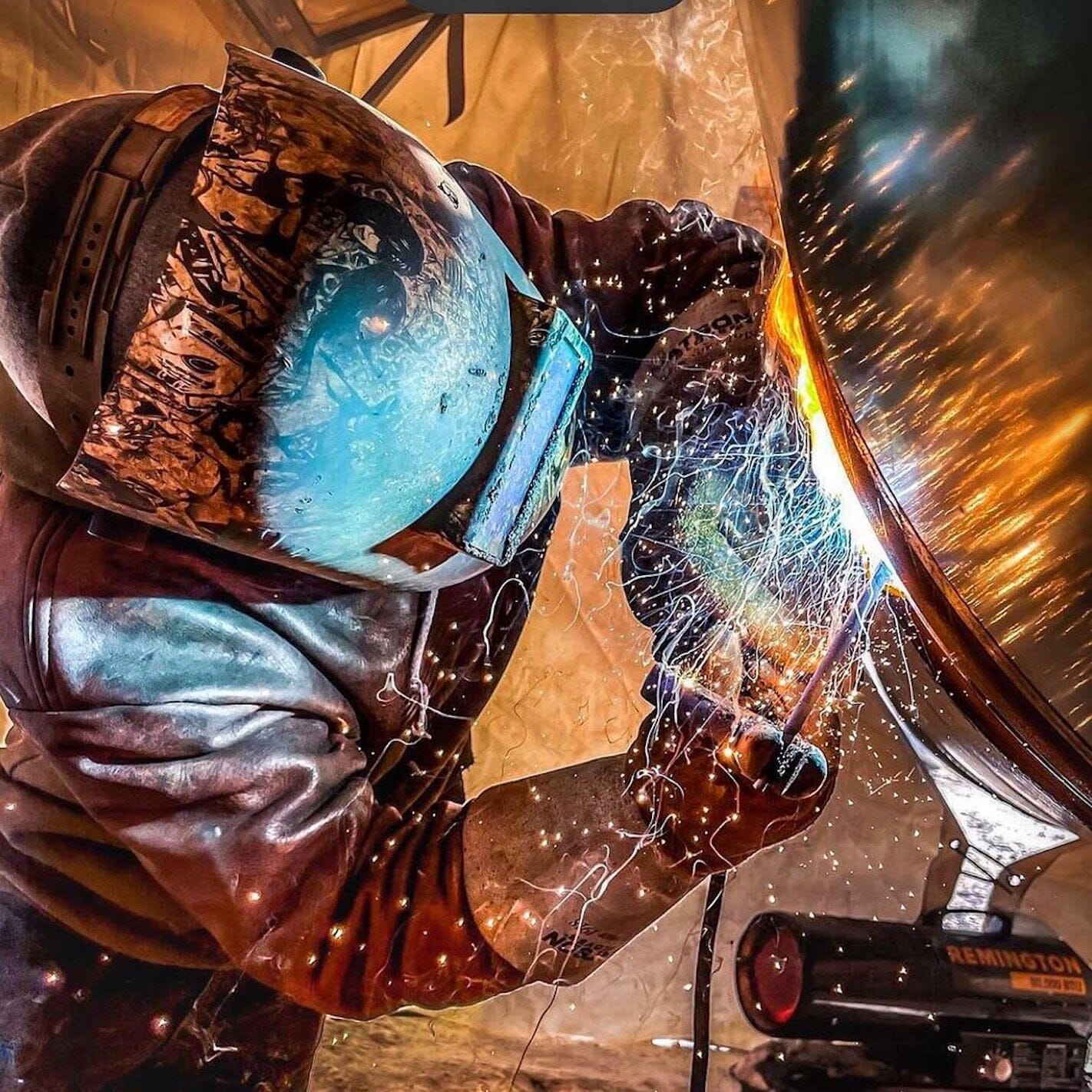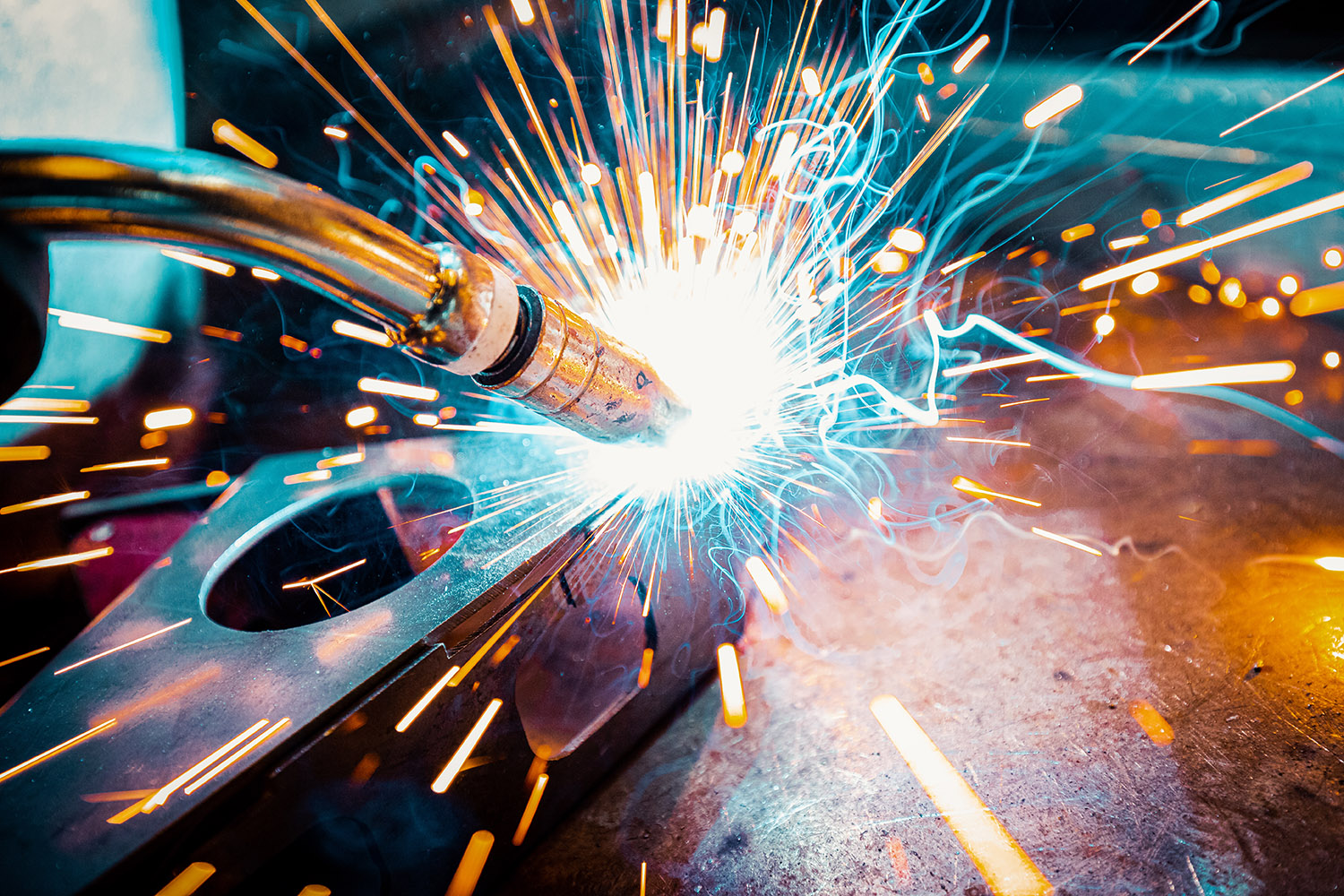Tips for avoiding distortion in Montana Mobile Welding and Repair Welding projects
Usual Welding Repair Work Issues and Exactly How to Address Them Successfully
Welding repair services often run into a series of issues that can threaten the honesty of the last product. Usual problems include insufficient infiltration, porosity, and imbalance, amongst others. Each defect offers distinct difficulties that call for particular approaches for resolution. Recognizing these issues is crucial for welders aiming to enhance their skills and results. This conversation will certainly discover these usual welding repair service issues and reliable approaches to address them.
Poor Penetration
Inadequate infiltration happens when the weld metal falls short to totally fuse with the base product, resulting in weak joints and possible structural failings. This concern usually comes from not enough heat input, wrong electrode angle, or incorrect welding rate. Welders may encounter inadequate infiltration due to a miscalculation of the necessary specifications for a specific product thickness or type. Furthermore, contamination on the base material's surface area can prevent efficient bonding, worsening the issue. To resolve poor penetration, welders ought to ensure ideal setups on their equipment and keep a tidy work surface. Routine evaluation of welds is suggested to recognize any type of deficiencies early, enabling prompt modifications and the avoidance of jeopardized architectural stability in bonded settings up.
Porosity
Porosity is a common defect in bonded joints that materializes as tiny gas bubbles caught within the weld steel. This defect can compromise the integrity of the weld, bring about decreased stamina and possible failure under anxiety. Montana Mobile Welding and Repair Belgrade Welding. Porosity generally arises from contamination, dampness, or improper welding techniques, which allow gases to leave right into the molten weld swimming pool. To deal with porosity, welders ought to ensure appropriate surface area prep work, maintain a clean workplace, and use ideal welding parameters. Furthermore, picking the appropriate filler product and securing gas can reduce gas entrapment. Regular assessment and screening of welds can assist identify porosity early, ensuring timely rehabilitative actions are taken, thereby preserving the top quality and dependability of the welded framework
Misalignment
Misalignment in welding can arise from numerous factors, consisting of improper arrangement and thermal development. Comprehending the root triggers is necessary for efficient resolution. Several correction strategies are readily available to realign parts and assure architectural stability.
Root causes of Imbalance
Welding imbalance typically originates from a range of underlying issues that can endanger structural honesty. One main cause is incorrect fit-up of components before welding, which can cause voids and unequal surfaces. Variants in thermal development during the welding procedure can also result in distortion, specifically if the materials being joined have various coefficients of expansion. Additionally, poor clamping and fixturing might stop working to hold components securely in position, bring about movement during welding. Poorly conserved tools, consisting of welding equipments and devices, may present incongruities in the weld bead, additional adding to imbalance. Ultimately, operator mistake, coming from not enough training or experience, can additionally play a significant function in developing misaligned welds.
Modification Methods Readily Available
Resolving misalignment efficiently calls for a mix of rehabilitative methods customized to the certain issues available. One usual approach is making use of components or jigs to hold elements in the correct placement during welding, guaranteeing regular placement. Furthermore, pre-heating the materials can help decrease distortion and improve fit-up. For considerable misalignment, mechanical realignment strategies, such as using hydraulic jacks or clamps, can be employed to deal with the placement prior to welding. Post-weld heat therapy might also be necessary to alleviate stress and anxieties created by misalignment. Careful evaluation and change during the arrangement phase can protect against misalignment concerns from coming to be significant troubles, promoting a smoother welding process and enhancing overall structural integrity.
Distortion
Distortion is a common challenge in welding that can arise from various factors, including uneven heating & cooling. Comprehending the sources of distortion is vital for applying reliable avoidance methods. Resolving this concern not just boosts structural integrity but likewise boosts the general high quality of the weld.
Sources of Distortion
When subjected to the intense warm of welding, materials frequently undertake modifications that can cause distortion. This phenomenon largely emerges from thermal expansion and tightening during the welding procedure. As the weld location heats up, the material expands; upon air conditioning, it contracts, which can create interior stress and anxieties. In addition, uneven home heating across a work surface can intensify these anxieties, resulting in warping or flexing. The type of material likewise plays a considerable role; metals with differing thermal conductivity and coefficients of expansion might react in a different way, causing unforeseeable distortions. Poor joint layout and inadequate fixturing can add to misalignment during welding, enhancing the probability of distortion. Recognizing these causes is necessary for efficient welding fixing and avoidance approaches.
Prevention Techniques
Reliable avoidance techniques for distortion throughout welding emphasis check it out on managing heat input and making sure proper joint layout. Keeping a regular heat input assists to decrease thermal expansion and tightening, which can result in distortion. Making use of techniques such as pre-heating the work surface can also minimize the temperature level gradient, promoting consistent home heating. In addition, picking proper joint styles, such as T-joints or lap joints, can enhance stability and decrease tension concentrations. Carrying out appropriate fixturing to protect the workpieces in location even more aids in preserving alignment throughout the welding process. Ultimately, staggered welding series can distribute heat a lot more uniformly, avoiding localized distortion. By using these approaches, welders can considerably decrease the possibility of distortion and enhance the general quality of their welds.
Fracturing
Cracking is a common concern come across in welding repair work, commonly arising from different variables such as inappropriate air conditioning rates, product selection, or inadequate joint prep work. The incident of fractures can considerably jeopardize the integrity of the weld, resulting in possible failings throughout operation. To address this problem, welders need to initially assess the root causes, making certain that materials are compatible and suitably picked for the specific application. In addition, controlling the cooling rate throughout the welding procedure is essential; fast cooling can generate tension and lead to breaking. Proper joint design and prep work likewise add to reducing the threat. Carrying out these methods can improve weld quality and longevity, ultimately minimizing the chance of breaking in ended up weldments.

Incomplete Fusion
A considerable issue in welding repair work is insufficient combination, which happens when the weld steel does not adequately bond with the base product or previous weld passes - Montana Mobile Welding and Repair. This problem can lead to weaknesses in the joint, possibly jeopardizing the stability of the bonded framework. Factors adding to insufficient fusion consist of insufficient warm input, improper welding method, and contamination of the surfaces being signed up with. To resolve this issue effectively, welders must assure correct pre-weld cleansing and surface area preparation, as well as change their welding parameters to accomplish appropriate infiltration and blend. Normal examination throughout the welding process can additionally assist determine insufficient fusion early, enabling timely restorative steps to improve the total quality of the weld
Overheating
While welding repair work can boost structural honesty, overheating offers a significant difficulty that can result in material deterioration. Too much warm throughout welding can alter the mechanical residential or commercial properties of steels, resulting in decreased strength, boosted brittleness, and warping. This phenomenon is specifically important in high-stress applications where structural integrity is vital. Determining getting too hot can i thought about this involve visual inspections for discoloration or distortion, in addition to monitoring temperature during the welding process. To minimize the risks associated with getting too hot, welders ought to employ ideal techniques, such as regulating warm input, readjusting traveling speed, and utilizing suitable filler products. In addition, applying pre- and post-weld heat therapies can assist bring back material properties and boost the total high quality of the fixing, making sure lasting performance and safety and security.
Frequently Asked Questions
What Are the Common Indications of a Welding Problem?

How Can I Evaluate My Welds for Quality?
To check welds for high quality, one can utilize aesthetic assessments, ultrasonic screening, and radiographic methods. Each method ensures structural stability, determines problems, and validates adherence to specified standards, ultimately enhancing the integrity go to my site of the welded joints.
What Security Preventative Measures Should I Take While Welding?
When welding, one must prioritize security by putting on suitable personal protective equipment, making sure proper air flow, protecting combustible materials away, preserving a clean office, and knowing environments to protect against crashes and injuries.
Can I Repair a Weld Without Renovating the Entire Joint?
Repairing a weld without redesigning the entire joint is feasible, relying on the damages (Montana Mobile Welding and Repair Belgrade Fabrication). Techniques such as grinding, adding filler material, or using a welding process can efficiently resolve certain flaws while maintaining the surrounding structure
What Equipment Are Important for Reliable Welding Repair Works?
Necessary tools for efficient welding fixings include a welding machine, cable brush, mill, protective equipment, clamps, and filler products. Each tool plays a vital duty in making certain top quality and safety during the fixing process. Porosity generally occurs from contamination, moisture, or incorrect welding techniques, which enable gases to escape into the liquified weld pool. Improperly conserved tools, including welding devices and tools, might present variances in the weld grain, further adding to imbalance. When subjected to the extreme heat of welding, products commonly undertake changes that can lead to distortion. Breaking is a typical concern experienced in welding repair work, commonly resulting from various elements such as inappropriate cooling rates, material option, or insufficient joint prep work. A significant problem in welding repair services is incomplete combination, which occurs when the weld metal does not properly bond with the base product or previous weld passes.